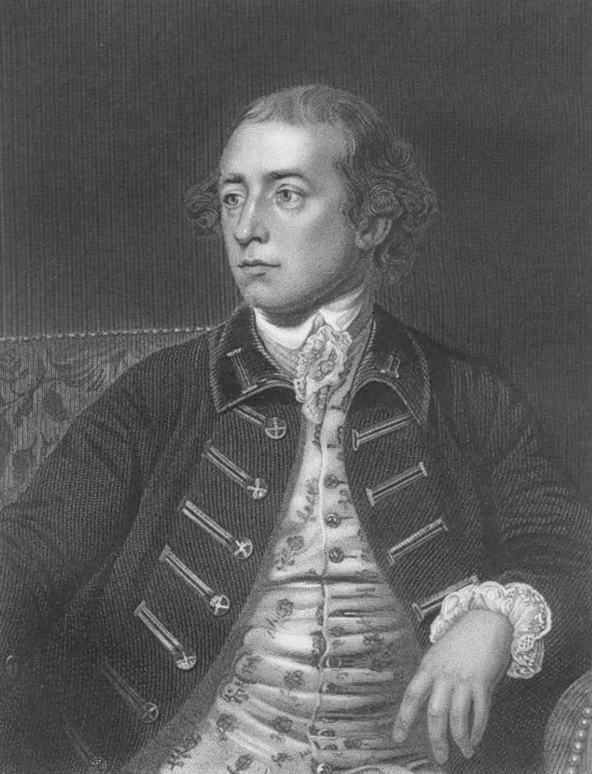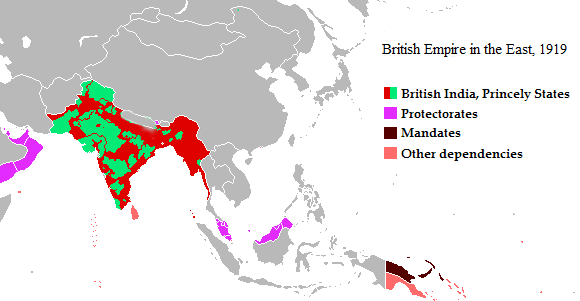|
Rajpramukh
Rajpramukh was an administrative title in India which existed from India's independence in 1947 until 1956. Rajpramukhs were the appointed governors of certain Indian provinces and states. Background The British Indian Empire, which included most of present-day India, Pakistan, and Bangladesh, was made up of two types of political units. British India consisted of fifteen provinces, all British possessions, ruled directly by the British in all respects, either through a governor or a chief commissioner, officials appointed by the viceroy. Existing alongside British India were a large number of princely states, ruled by local hereditary rulers, who acknowledged British suzerainty, including British control of their external affairs, but who retained local autonomy. At the time of the proclamation of Queen Victoria as Empress of India in 1875, more than 700 Indian princely states and territories enjoyed treaty relations with the British Crown. The exact relationship betw ... [...More Info...] [...Related Items...] OR: [Wikipedia] [Google] [Baidu] |
States And Union Territories Of India
India is a federalism, federal union comprising 28 federated state, states and 8 union territory, union territories, for a total of 36 subnational entities. The states and union territories are further subdivided into 800 List of districts in India, districts and smaller administrative divisions of India, administrative divisions by the respective subnational government. The states of India are self-governing administrative divisions, each having a State governments of India, state government. The governing powers of the states are shared between the state government and the Government of India, union government. On the other hand, the union territories are directly governed by the union government. History 1876–1919 The British Raj was a very complex political entity consisting of various imperial divisions and states and territories of varying autonomy. At the time of its establishment in 1876, it was made up of 584 princely state, constituent states and the prov ... [...More Info...] [...Related Items...] OR: [Wikipedia] [Google] [Baidu] |
Gwalior State
The Gwalior State was a List of Maratha dynasties and states, state within the Maratha Confederacy located in Central India. It was ruled by the Scindia, House of Scindia (anglicized from Sendrak), a Hindu Maratha Confederacy, Maratha dynasty. Following the dissolution of the Confederacy, it became part of the Central India Agency of the Indian Empire (1876–1947), Indian Empire under British protection. The state was entitled to a 21-Salute state, gun salute when it became a princely state of the British Raj, India. It took its (later) name from the old town of Gwalior, which, although not its first capital, was an important place because of its strategic location and the strength of Gwalior Fort, its fort; it became later its capital, after Daulat Rao Sindhia built its palace in the village of Gwalior#Lashkar Subcity, Lashkar, near the fort. The state was founded in the early 18th century by Ranoji Sindhia, as part of the Maratha Confederacy. The administration of Ujjain was ... [...More Info...] [...Related Items...] OR: [Wikipedia] [Google] [Baidu] |
Hari Singh
Hari Singh Bahadur (September 1895 – 26 April 1961) was the last ruling Maharaja of the princely state of Jammu and Kashmir of the Dogra dynasty. Hari Singh was the son of Amar Singh and Bhotiali Chib. In 1923, following his uncle's death, Singh became the new Maharaja of Jammu and Kashmir. After Indian Independence in 1947, Singh wanted Jammu and Kashmir to remain as an independent kingdom. He acceded to the Dominion of India to get the support of Indian troops against an invasion by tribal armed men and the Pakistan Army into his state. Singh remained the titular Maharaja of the state until 1952, when the monarchy was abolished by the Indian government. After spending his final days in Bombay, he died on 26 April 1961. Early life Hari Singh was born in the Dogra Rajput royal family on September 1895 at the Amar Mahal, Palace, Jammu. He was the only surviving son of Raja Amar Singh, the brother of Maharaja Pratap Singh, then the Maharaja of Jammu and Kashmir. Since ... [...More Info...] [...Related Items...] OR: [Wikipedia] [Google] [Baidu] |
Junagadh State
The State of Junagadh or Junagarh was a princely state located in Gujarat, It was ruled by the Muslim Babi dynasty since 1654 by first Nawab of Junagarh, Nawab of Junagadh even within the Maratha Confederacy and later British India. which, after the partition of British India, Political integration of India, acceded to the Dominion of Pakistan. Subsequently, the Dominion of India, Union of India Annexation of Junagadh, annexed Junagadh in 1948, legitimized through a plebiscite held the same year. Pakistan claims sovereignty over the erstwhile princely state to this day. Junagarh State Council with S Parmar have been entrusted with the erstwhile princely state of Junagarh. History The state of Junagadh was established by the Maharaja of Parmar (Rajput clan), Parmar Rajputs. Muhammad Sher Khan Babai was the founder of the Babi dynasty, Babi Pashtun dynasty of Junagarh in 1654. His descendants, the Babi Nawabs of Junagarh, conquered large territories in southern Saurashtra (regi ... [...More Info...] [...Related Items...] OR: [Wikipedia] [Google] [Baidu] |
Governor-General Of India
The governor-general of India (1833 to 1950, from 1858 to 1947 the viceroy and governor-general of India, commonly shortened to viceroy of India) was the representative of the monarch of the United Kingdom in their capacity as the emperor or empress of India and after Indian independence in 1947, the representative of the monarch of India. The office was created in 1773, with the title of governor-general of the Presidency of Fort William. The officer had direct control only over his presidency but supervised other East India Company officials in India. Complete authority over all of British territory in the Indian subcontinent was granted in 1833, and the official came to be known as the governor-general of India. In 1858, because of the Indian Rebellion the previous year, the territories and assets of the East India Company came under the direct control of the British Crown; as a consequence, company rule in India was succeeded by the British Raj. The governor-general ( ... [...More Info...] [...Related Items...] OR: [Wikipedia] [Google] [Baidu] |
Instrument Of Accession
The Instrument of Accession was a legal document first introduced by the Government of India Act 1935 and used in 1947 to enable each of the rulers of the princely states under British paramountcy to join one of the new dominions of Dominion of India, India or Dominion of Pakistan, Pakistan created by the Partition of India, Partition of British India. The instruments of accession executed by the rulers, provided for the accession of states to the Dominion of India (or Pakistan) on three subjects, namely, defence, external affairs and communications. Background 565 princely states existed in British Raj, India during the British Raj. These were not parts of British India, having never become possessions of the Crown, the British Crown, but were tied to the Crown by various treaties and were under the suzerainty of the Crown. British India and the princely states were together referred to as the "Indian Empire", commonly called "India". The Government of India Act 1935 intro ... [...More Info...] [...Related Items...] OR: [Wikipedia] [Google] [Baidu] |
Dominion Of Pakistan
The Dominion of Pakistan, officially Pakistan, was an independent federal dominion in the British Commonwealth of Nations, which existed from 14 August 1947 to Pakistan Day, 23 March 1956. It was created by the passing of the Indian Independence Act 1947 by the Parliament of the United Kingdom, British parliament, which also created an independent Dominion of India. The new dominion consisted of those presidencies and provinces of British India which were allocated to it in the Partition of India. Until 1947, these regions had been ruled by the United Kingdom as a part of the British Empire. Its status as a federal dominion within the British Empire ended in 1956 with the completion of the Constitution of Pakistan of 1956, Constitution of Pakistan, which established the country as a republic. The constitution also administratively split the nation into West Pakistan and East Pakistan. Until then, these provinces had been governed as a singular entity, despite being separate geog ... [...More Info...] [...Related Items...] OR: [Wikipedia] [Google] [Baidu] |
Dominion Of India
The Dominion of India, officially the Union of India, * * was an independent dominion in the British Commonwealth of Nations existing between 15 August 1947 and 26 January 1950. Until its Indian independence movement, independence, India had been ruled as an informal empire by the United Kingdom. The empire, also called the British Raj and sometimes the British Indian Empire, consisted of regions, collectively called British India, that were directly administered by the British government, and regions, called the princely states, that were ruled by Indian rulers under a system of paramountcy, in favor of the British. The Dominion of India was formalised by the passage of the Indian Independence Act 1947, which also formalised an independent Dominion of Pakistan—comprising the regions of British India that are today Pakistan and Bangladesh. The Dominion of India remained "India" in common parlance but was geographically reduced by the lands that went to Pakistan, as a separate d ... [...More Info...] [...Related Items...] OR: [Wikipedia] [Google] [Baidu] |
Partition Of India
The partition of India in 1947 was the division of British India into two independent dominion states, the Dominion of India, Union of India and Dominion of Pakistan. The Union of India is today the Republic of India, and the Dominion of Pakistan is the Islamic Republic of Pakistan and the People's Republic of Bangladesh. The Partition (politics), partition involved the division of two provinces, Bengal and the Punjab Province (British India), Punjab, based on district-wise Hindu or Muslim majorities. It also involved the division of the British Indian Army, the Royal Indian Navy, the Indian Civil Service, the History of rail transport in India, railways, and the central treasury, between the two new dominions. The partition was set forth in the Indian Independence Act 1947 and resulted in the dissolution of the British Raj, or Crown rule in India. The two self-governing countries of India and Pakistan legally came into existence at midnight on 14–15 August 1947. The partiti ... [...More Info...] [...Related Items...] OR: [Wikipedia] [Google] [Baidu] |
1946 Cabinet Mission To India
A cabinet mission went to India on 24 March 1946 to discuss the transfer of power from the British government to the Indian political leadership with the aim of preserving India's unity and granting its independence. Formed at the initiative of British Prime Minister Clement Attlee, the mission contained as its members, Lord Pethick-Lawrence ( Secretary of State for India), Sir Stafford Cripps (President of the Board of Trade), and A. V. Alexander ( First Lord of the Admiralty). The Viceroy of India Lord Wavell participated in some of the discussions. The Cabinet Mission Plan, formulated by the group, proposed a three-tier administrative structure for British India, with the Federal Union at the top tier, individual provinces at the bottom tier and Groups of provinces as a middle tier. Three Groups were proposed, called Groups A, B and C, respectively, for Northwest India, eastern India and the remaining central portions of India The Cabinet Mission's plan failed because of ... [...More Info...] [...Related Items...] OR: [Wikipedia] [Google] [Baidu] |
Rajputana Agency
The Rajputana Agency was a political office of the British Raj, British Indian Empire dealing with a collection of native states in Rajputana (now in Rajasthan, northwestern India), under the political charge of an Agent reporting directly to the Governor-General of India and residing at Mount Abu in the Aravalli Range. The total area of the states falling within the Rajputana Agency was , with eighteen states and two estates or chiefships. Subdivisions and (e)states * Mewar Residency, with headquarters at Udaipur, Rajasthan, Udaipur, dealt with the state of Mewar State, Mewar (title Maharana of Udaipur), a salute state entitled to a hereditary gun salute of 19 guns (21 local). * Southern Rajputana States Agency, which was part of Mewar Residency until 1906, when it was separated, covered three salute states: ** Banswara State, Banswara, title Maharawal, hereditary 15 guns ** Dungarpur State, Dungarpur, title Maharawal, hereditary 15 guns ** Pratapgarh State, Pratapgarh, ti ... [...More Info...] [...Related Items...] OR: [Wikipedia] [Google] [Baidu] |







